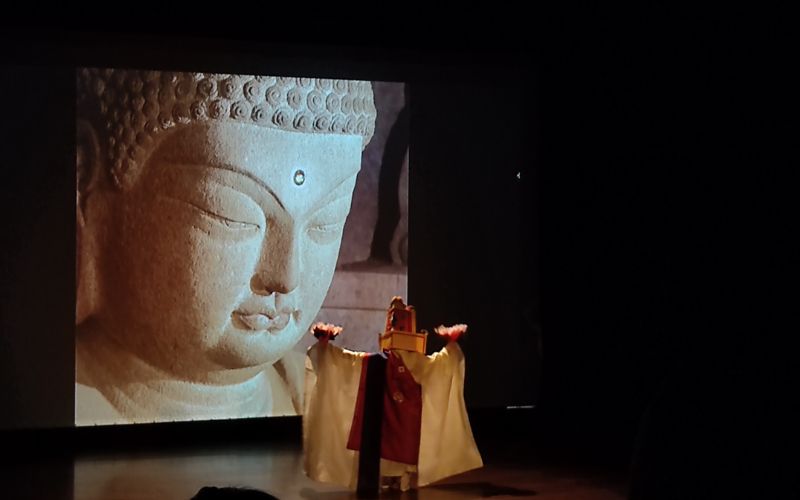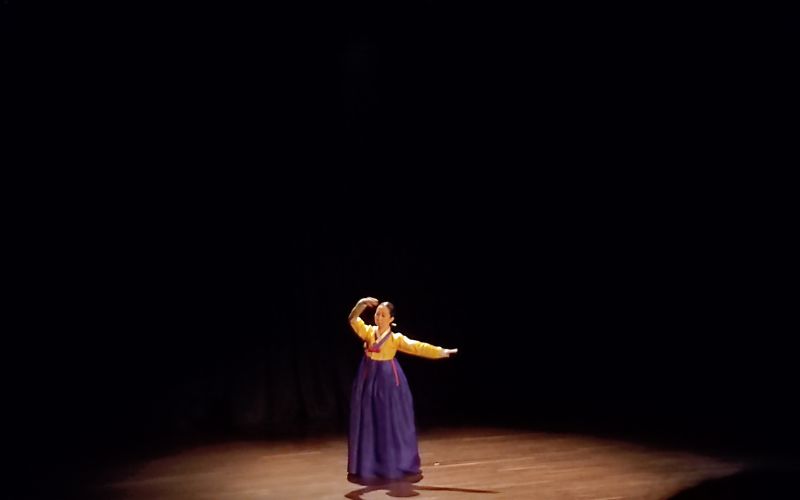On January 7, 2025, I had the privilege of attending the Asia Dance Festival at the Bangalore International Centre, Domlur. This annual event is a vibrant celebration of Asia's rich dance traditions, bringing together performances that beautifully blend heritage and contemporary artistry. The 2025 edition, hosted by the Korea Dance & Arts Center, was an unforgettable evening of cultural exchange, showcasing the depth and elegance of Korean dance.
As someone who has always admired the beauty of cultural expression, I was excited to witness the event. From the moment I entered the venue, the energy was palpable. The stage, set against a simple yet elegant backdrop, allowed the focus to remain on the performers and their mesmerizing movements.
The evening opened with Nabimu, performed by Cha Myung Hee. Rooted in the Buddhist ritual of Jakbeop, this dance radiated serenity and grace. The movements, accompanied by chants that honored the Three Jewels and celestial beings, seemed to purify not only the stage but also the hearts of the audience. Watching this performance was like experiencing a spiritual journey, filled with joy and enlightenment.

Next came Seonbi Hagchum, performed by Lee Jong Ho. This piece stood out for its poetic representation of the seonbi spirit, the traditional Korean scholars who valued integrity and simplicity. The dance, which mirrored the elegance of a crane in flight, was mesmerizing. The white and black hakchangui attire of the performer added to the visual beauty, symbolizing harmony and purity. The intricate gestures captured the dignified yet gentle character of the seonbi, leaving the audience in awe.
Jinju Gyobang Gutgeori Chum, performed by Seo Jung Sook, brought a sense of seasonal rhythm to the stage. This dance, an Intangible Cultural Heritage of Gyeongnam Province, depicted the four seasons with elegance and precision. The graceful transitions between refined postures and intricate footwork were breathtaking, showcasing the artistry of Korea's court dance traditions. The improvisational elements towards the end highlighted the creativity and spontaneity of this timeless form.

Taepyeongmu was performed by Kwak Myeong Ji. This traditional folk dance expressed the hope for peace and prosperity, a sentiment that resonated deeply with the audience. The vibrant footwork and delicate hand movements, set to the rhythms of Wangsimni Dang-gut, were both captivating and uplifting. It was a fitting end to an evening that celebrated harmony and cultural unity.
What made the Asia Dance Festival truly special was not just the performances but the spirit of connection it fostered. The event aimed to promote K-Art beyond K-Culture, strengthening networks through dance across countries. As I watched the performers bring their stories to life, I felt a profound sense of admiration for the artists and the cultural heritage they represented.
Attending this segment of the Asia Dance Festival was more than just watching a series of performances; it was an immersion into the soul of Korean culture. The dedication and skill of the performers, coupled with the event's celebration of diversity and collaboration, left me inspired and enriched. It reminded me of the power of art to transcend borders and connect people across the world.
If you ever get the chance to attend this festival, I wholeheartedly recommend it. It’s a beautiful reminder of the depth and beauty of Asia’s cultural tapestry, and an experience that will stay with you long after the final curtain falls.
How about this article?
- Like1
- Support1
- Amazing2
- Sad0
- Curious0
- Insightful0


